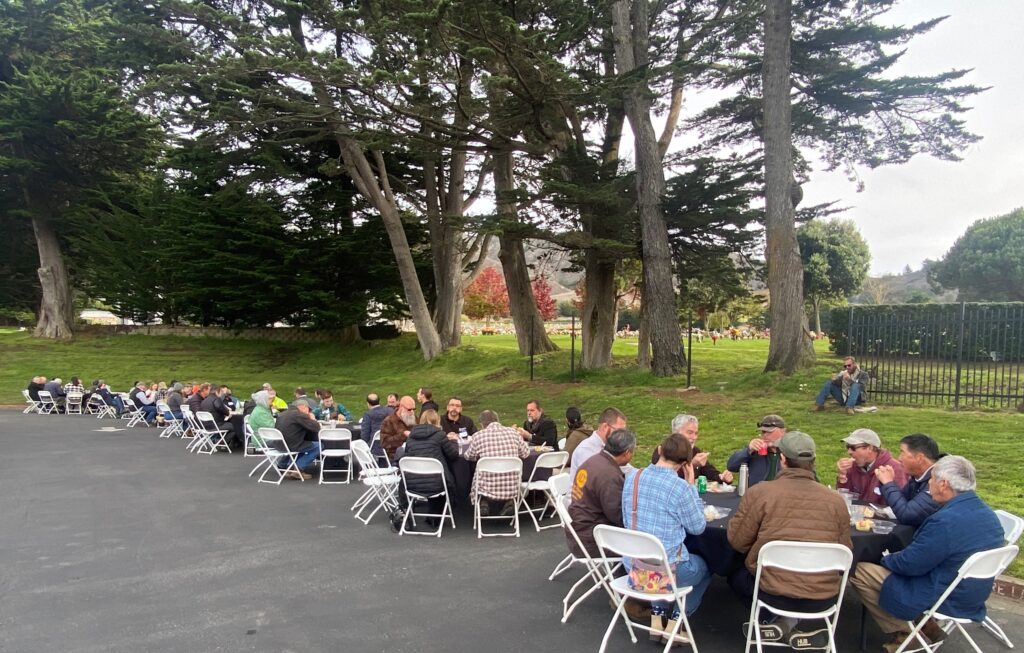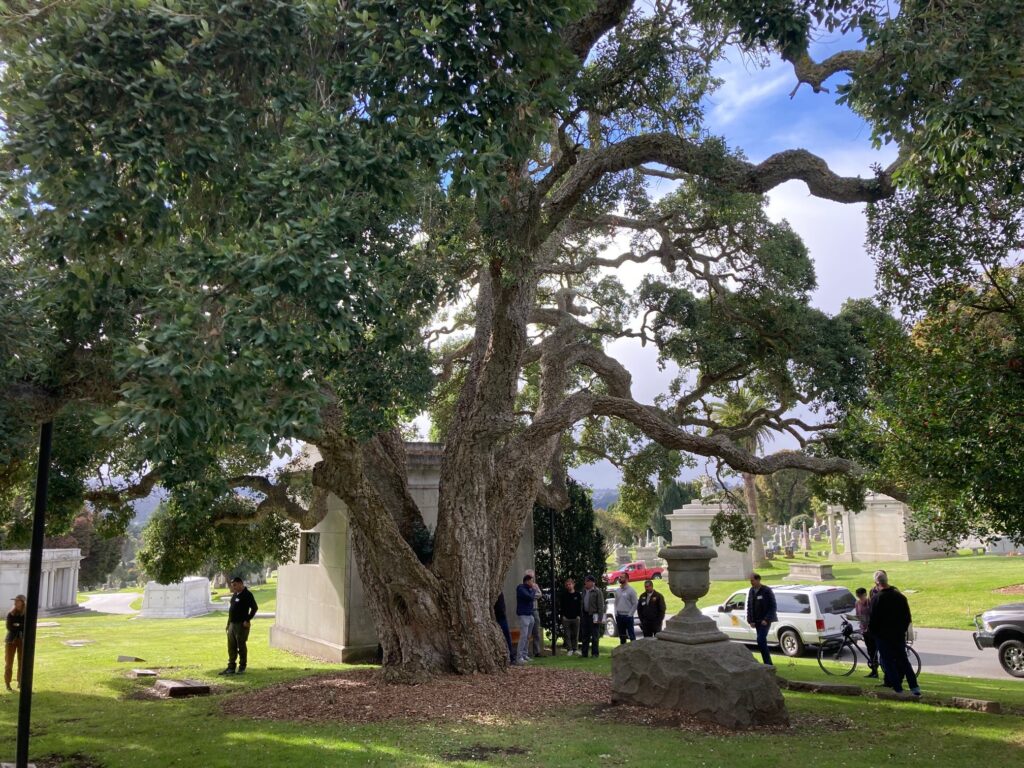On Friday, November 4, 2022, we held our annual educational event at the Cypress Lawn Arboretum in Colma, California. Ninety-five attendees joined us for Putting Research to Work. It was celebration of Britton Fund(ed) research that arborists can put to everyday use. In brief, we
- saw some results from our most recently funded project on native species in the urban environment;
- looked at climate change and trees;
- discussed pruning, irrigation, and new nursery industry practices for better trees; and
- took a peek at our upcoming publication Botany for Arborists.
We wrapped up the day with a tour of the original East Campus of Cypress Lawn Arboretum, which was led by our host and Arboretum Director, Josh Gevertz.
The nitty-gritty
Cami Pawlak, Graduate Student at Cal Poly San Luis Obispo, presented research findings from her Britton Funded project Trends in Native Tree Plantings in Urban California. The goals of this project are:
- to assess trends in native trees across the state,
- to create city-specific native planting lists for every census-designated place in California, and
- to assess the proportion of diversity that native trees make-up in California’s urban forests.
Cami researched 94 species found in 1173 urban centers throughout California. The final paper will be published in Arboriculture and Urban Greening and shared in a future issue of the Western Arborist.
Dr. Drew Zwart from Bartlett Tree Experts in San Rafael, California covered Trees and Stress: Changing Climate, Stress Related Concerns, and Potential Mitigation Options. Dr. Zwart left us with some practical takeaways.
- Manage all the cultural issues you can; start with a detailed site assessment and remember to use mulch!
- Test soils and roots; know the medium you are working with.
- Nutrients and Phytophthora spp. are both important and treatable issues. Test water or soils where recycled or well water is used.
- Lastly, canker pathogens are on the rise – fungicides may have limited benefits and may not be practical. Prune dead branches to reduce inoculum.
We were fortunate to have Drs. Downer, Chalker Scott and Lacan with us. Their sessions on botany, pruning, and irrigation of landscape trees rounded out the programming. All three are currently involved in ongoing projects within the Britton Fund.
Dave Teuschler from Devil Mountain Nursery in Lodi, California provided a “hands on” aspect to the day during his talk Better Roots for Better Trees. Dave passed around some pretty wild examples of root problems on saplings driving home the message that roots matter! He started with a discussion on air root pruning pots. Plants, especially trees, are grown in a system that utilizes air root pruning in the early stages of nursery production are far more likely to succeed in the landscape. When these containers are utilized in the initial liner planting through 5-gallon growing process, well-structured root balls are formed. This
- eliminates girdling and circling roots,
- results in plants that are more vigorous and healthier,
- enhances plant growth during potting up into larger containers (since roots are not disturbed in the upsizing process), and
- demonstrates better long-term performance.
Dave had a variety of the Trees for Changing Climates species on hand for attendees to touch, feel and even (for some) to take home.
At the end of the day, twenty or so attendees took advantage of the opportunity to tour the “east campus” with Arboretum Director (and gracious host) Josh Gevertz. Stephen Pree, from the City of El Cerrito, shared his thoughts about the tour:
“Our meeting place was the big heritage cork oak (Quercus suber) where about 20 arborists ogled in wonder at this grand specimen tree. Arboretum Director Josh Gevertz described the tree as one of the first to be planted at Cypress Lawn 130 years ago and told us about work that had been performed on the tree by Christopher Campbell Tree Design. Work included a 12” root collar excavation, mulching , and restorative pruning and crown cleaning. Josh told us that Roy Leggett had introduced him to the Cypress Lawn project, which required restoration of numerous heritage trees, including removing of massive amounts of Algerian Ivy (Hedera canariensis) that had grown into several tree canopies. Christopher described some individual crown restoration projects including a mature blue atlas cedar (Cedrus atlantica ‘Glauca’) and several red flowering gum (Corymbia ficifolia), which were the predominant species nearby.”
We had an amazing day of education and networking within a space created for growth and legacy. Thank you to Joshua and his team at Cypress Lawn for their hospitality, as well as to our speakers and attendees for participating in this day of learning.


